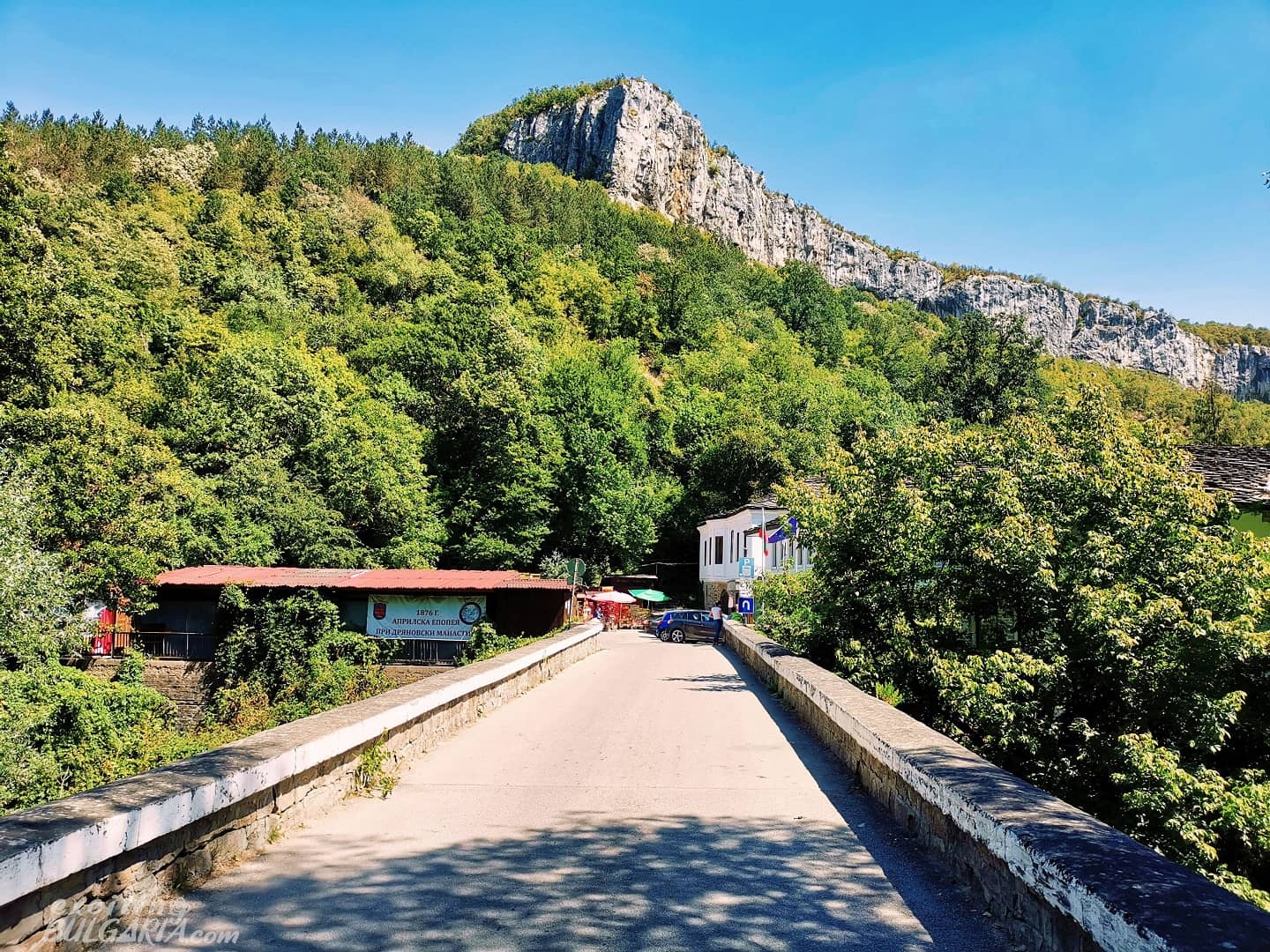The Dryanovo Monastery is located in the picturesque gorge of Andaka and Dryanovo rivers, surrounded by high limestone cliffs. The active monastery is considered one of the top 10 shrines of the Bulgarian Orthodox Church, a national historical monument and a popular tourist site.

History
The history of the Dryanovo Monastery dates back to the 13th century when it was founded during the time of Tsar Kaloyan. The monastery was established when a procession carrying the relics of St. Michael the Warrior stopped for the night by the Dryanovska river on its way from Potuka (an unknown settlement, but most probably today’s Batak) to the capital Tarnovgrad.

In the 14th century, it became one of the centers of hesychasm, but when the Ottomans advanced to Tarnovo in 1393, it was destroyed. After several relocations, destruction and reconstruction attempts, it was rebuilt in its current location in 1845. Today’s buildings of the monastery are from the end of the 19th century.

Throughout its history, the monastery has served as a center of literary and religious activities and was the guardian of the Bulgarian spirit during the five centuries of Ottoman rule. It also hosted many prominent revolutionaries, including Vasil Levski and Matei Preobrazhenski, and even a revolutionary committee was founded within its walls.

The Dryanovo Monastery played a key role in Bulgaria’s national liberation struggles, particularly during the April Uprising, which was a significant moment in the country’s history. The rebellion was preceded by the accumulation of food and weapons in the monastery.

On April 29, 1876, Voivode Pope Hariton, a prominent Bulgarian clergyman, and Bacho Kiro, a folk teacher and poet, assembled a group of 200 people. They sought refuge in the monastery and defended it against the Ottoman troops for 9 days. The monastery was ultimately burned down, along with its library, and many rebels were killed or captured.

The monastery was partially restored in 1877, with the main temple being consecrated and bearing the scars of bullet holes on its walls. In 1897, residents even built an ossuary monument in the courtyard to honor the fallen insurgents and as a reminder of the sacrifices made for Bulgarian freedom. Designed in Italy, the monument has a four-sided pyramid with a cross on the top and bears an emotional inscription above its entrance: ‘In Memory of those who gloriously fell here for Bulgarian freedom on May 8, 1876’. The bones of the fallen defenders of the monastery are gathered here. A full-length figure of an insurgent with a rifle on his shoulder is visible above the entrance.

Today, the monastery houses a collection of relics from its history and valuable icons by painters Racho Tiholov and Simeon Tsonyov. The Dryanovo Monastery is also known for its library. One of the first copies of the Slav-Bulgarian History, an influential piece of the Bulgarian revival was discovered here.
The monastery complex
The shape of the large courtyard in the monastery is formed by the river running at the bottom of the gorge. At its southern end, the courtyard widens significantly, while at the northern end, it narrows into a passage that leads to a grand archway in the reception building.

After entering through the archway, on the left side there is a long, picturesque farm building constructed with stone and wood. The buildings on the west side of the courtyard, with their basements partially submerged by the water, add a romantic touch to the overall appearance.

Accommodation and food are both offered in the monastery.

Visiting the Dryanovo Monastery
Location
The Dryanovo Monastery “St. Archangel Michael” (BG: Дряновски манастир „Свети Архангел Михаил“) is located on the northern slopes of the Balkan Mountains, 200 km east of the capital Sofia, 30 km southwest of the historic town of Veliko Tarnovo and 6 km southwest of Dryanovo.
How to get there
International road E85 between Veliko Tarnovo and Gabrovo passes 1 km from the monastery. The turnoff to the monastery is next to a tall, stone monument where you’ll see a ’Dr. monastery 1 km’ road sign too. The decent-quality road goes through a stone bridge to end at the paid parking area directly in front of the entrance. If the parking is full, the conductor will probably direct you to go back and park on the roadside.

There are also buses running between Veliko Tarnovo and Gabrovo that stop next to the turnoff. Bacho Kiro railway station, about 500 meters from the monastery, serves trains on the Ruse-Gabrovo and Stara Zagora-Gorna Oryahovitsa lines.
Opening hours
The Dryanovo Monastery is open from 08:00 to 20:00 (April-October) and from 08:00 to 16:30 (November-March).
What to see nearby
The Bacho Kiro cave, notable for its prehistoric discoveries, lies barely 300 meters upstream. It is accessible through a pleasant pathway that leads past the little Dryanovo waterfall.

In the opposite direction, visitors to the Dryanovo Monastery can also stroll along the old road that leads to the monastery, passing through the main street of the village of Tsinga and observing the previous locations where the monastery was built and demolished over the years.